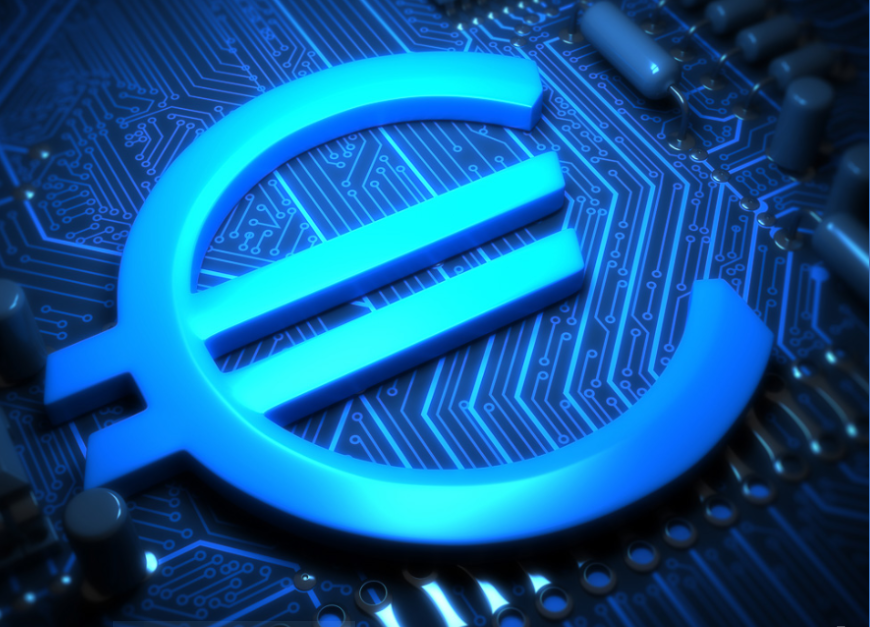ECB har udarbejdet sin første rapport om en digital euro, en e-euro, og den viser, at ECB bestræber sig på at blive mere uafhængig af dollaren, og e-euroen vil være et middel. Kina har samme målsætning med sin planlagte e-valuta. Men det får også betydning for bankerne. Hvor vil kunderne have deres e-euro? I bankerne eller i ECB? Det og mange andre spørgsmpl er uafklaret, og der vil gå flere år, før ECB og banksystemet har en løsning. Men sikkert er, at den digitale valuta kommer.
Why banks need to pay attention to where a digital euro is heading
This week, the ECB published an overview of the consultation responses it received on its digital euro survey.
The results show a variety of demands a digital euro would need to fulfil, including privacy, security, low costs and ease of use. Before discussing the ECB’s next steps, it’s worth recapping how we got here.
From tech gimmick to must-have in a few years
Central bank digital currencies (CBDC) discussions were mostly academic when bitcoin appeared on stage.
Back then, technical aspects of blockchain and monetary aspects of running a currency in a decentralised context drove interest. Central banks were comfortable discussing pros and cons in a non-committal way, and experimenting a bit, as it all remained a rather abstract discussion. A few central banks went further exploring specific use cases, such as the Swedish Riksbank facing declining use of physical cash.
This all changed profoundly when Facebook launched its ideas for a global stablecoin (Libra, now called Diem) back in 2019. All of a sudden, the prospect of a private stablecoin crowding out fiat currencies and pushing central banks into irrelevance turned into a real possibility, given Facebook’s vast global user base.
The response was two-pronged: on the one hand, strong pushback against Libra/Diem, which subsequently watered down its plans considerably. On the other hand, central banks such as the ECB started to look into CBDC more seriously. Around the same time, it became clear that China had been quietly working on its own CBDC (called DC/EP) at least since 2014. DC/EP pilot projects were launched in 2020, and there are persistent rumours about a broader rollout, perhaps in 2022.
Digital currency as tool in global power play
For Europe, it is important to understand the geopolitical context in which the ECB is considering the digital euro. There is a widely shared concern among policymakers about Europe’s dependence on foreign big tech platforms and Europe’s “strategic autonomy”. There is a lot to be said about both, but the euro and digital payments have been identified as an important factor reducing foreign dependence and strengthening Europe’s role in the world.
China and Europe share a wish to become less dependent on the dollar for international payments.
China and Europe share a wish to become less dependent on the dollar for international payments. As for the former, the DC/EP might be an instrument to achieve this, though its focus is mostly domestic.
Next to DC/EP, China has been developing its Cross-border Interbank Payment System (CIPS) to facilitate renminbi payments since 2015. The PBoC joined the Multiple CBDC (mCBDC) Bridge project, which explores multi-currency cross-border payments on a Distributed Ledger Technology (DLT) infrastructure.
Different goals, different solutions
In this context, and faced with these developments, it makes sense for the ECB to explore its options for a digital euro. Simultaneously, a multitude of goals is a problem for the digital euro project because different goals may require very different, and even conflicting, design choices.
Building a digital euro to bolster the international role of the euro requires an infrastructure that is accessible by foreign institutions that can settle large-value payments and allows easy exchange with foreign currencies. Applying the appropriate lingo requires a multi-currency wholesale CBDC solution.
But building a digital euro for small domestic retail payments, on the other hand, may require an infrastructure that is interoperable with existing point-of-sale terminals and a variety of digital platforms, works offline too, and has guaranteed user privacy while preserving transaction monitoring to avoid money laundering and terrorist financing.
An overarching condition for any CBDC solution is that it does not destabilise the financial system by draining commercial bank deposits in unpredictable ways.
Where we’re heading
It is far from certain that a single digital euro solution can satisfy all of these different requirements. Rather, different solutions may need to be considered for the different goals. Projects by other central banks and private parties typically distinguish domestic retail oriented use cases (like the Riksbank’s e-krona) from cross-border, large value and cross-currency ones (like mCBDC and its predecessor project).
It is not entirely clear yet which direction the digital euro will take, although it appears to move more in the retail direction. That said, we expect the ECB to keep an eye on the geopolitical context as well, which means the wholesale cross-border direction is not out of scope yet.
Another important distinction to make is that between the payment method and the underlying currency. The digital euro as a currency could be incorporated into existing payment methods. If payment schemes can incorporate bitcoin in their offering, adding a digital euro will surely not be a problem.
If the ECB wants to offer the digital euro as a solution where payments data are never processed by private sector players, as Panetta suggested, then launching it as a currency only is not enough. The ECB may also have to develop its own payment method as well — or at the very least, it will have to regulate payment processing by private parties strictly.
Why banks should pay attention to the ECB’s next steps
In a European Parliament hearing, ECB Board Member Fabio Panetta has indicated that a formal decision will be made over the next few months to start a formal investigation phase. Taking about two years, this phase would “carefully analyse possible design options and user requirements”. Only on the conclusion of this phase, so in 2023, the ECB would decide on the design.
The next phase, taking “several years”, would include actual testing and live experimentation. And only after that, the ECB would take a go/no go-decision. The ECB has indicated that this will not be before 2025.
A digital euro might have a strong impact on the structural availability and cyclical volatility of deposit funding
While this looks far off, banks should continue to pay attention. A digital euro might have a strong impact on the structural availability and cyclical volatility of deposit funding. We do not expect the ECB to allow a digital euro to blow a hole in commercial banks’ balance sheets, but the discussion about what is needed to avoid this is still ongoing.
Moreover, a digital euro would pose new challenges to the relationship banks want to maintain with their clients, on top of the already intensifying competition by fintech and big techs.
Non-bank service providers might also offer a digital euro wallet.
In combination with adjacent policy developments such as payments data sharing under the Payment Services Directive 2 and forthcoming Open Finance, as well as the increasing popularity of cryptocurrency and growth of “decentralised finance”, banks may increasingly have to ask themselves how they may serve their customers’ future needs, and how they can distinguish themselves from their bank and non-bank competitors in doing so.


